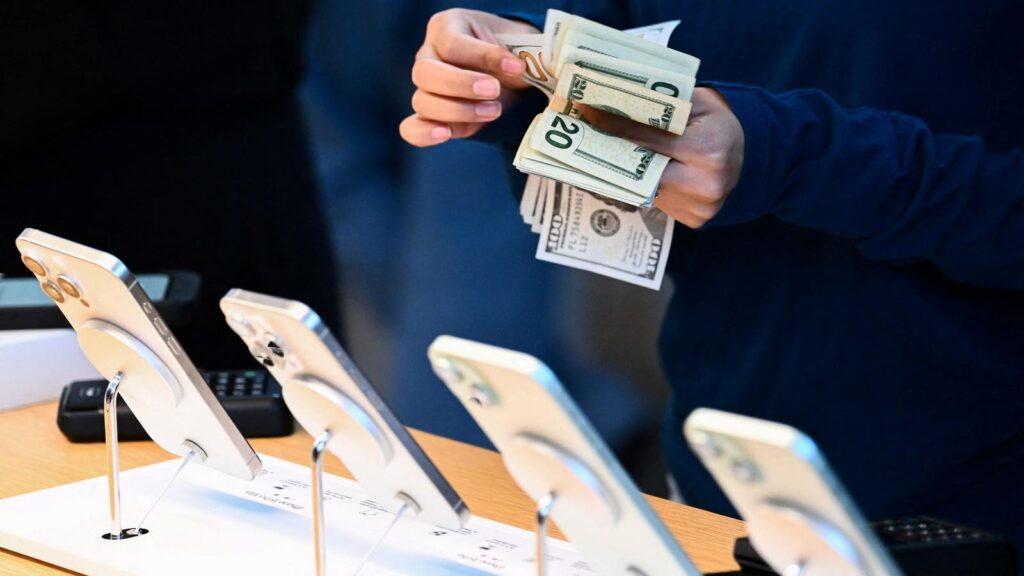The Federal Reserve Bank of Atlanta’s recent Survey of Consumer Payment Choice offers valuable insights into the evolving landscape of American retail payments. The June 2024 survey indicates a significant shift toward mobile payments, with 75% of U.S. consumers increasingly using platforms like PayPal, Zelle, Venmo, and Cash App. Additionally, 70% reported making at least one mobile payment in the past year. These findings highlight the growing acceptance of mobile payment technologies among consumers, indicating a trend towards digital transactions that is statistically significant compared to previous years. This comprehensive survey blends two critical approaches: the Survey of Consumer Payment Choice (SCPC) to assess how consumers adopt payment instruments and the Diary of Consumer Payment Choice (DCPC) to analyze specific transaction behaviors, generating a clearer picture of payment trends untainted by fintech exaggerations.
A striking figure from the survey reveals that nearly all U.S. consumers—99%—possess a credit, debit, or prepaid card, leaving just 1% cardless. However, the unbanked population stands at approximately 4%. Many of those without bank accounts cite various reasons, ranging from dissatisfaction with banks to concerns over account fees or minimum balances. This statistic has remained consistently low, but the rise in non-bank payment accounts, now used by nearly three-quarters of consumers, underscores a significant shift in how individuals approach payment methods. The concept of financial inclusion is evolving, suggesting that while traditional bank accounts still play a role, payment accounts are increasingly sufficient for participating in the economy. This opens up possibilities for alternative financial service providers, like Klarna, to introduce new solutions aimed at enhancing consumer access and rewards.
Despite advances in online transaction methods, the survey highlights an unexpected persistence of checks as a payment instrument. Approximately half of American consumers wrote a check in the previous month, which is surprising to many, particularly younger generations who are less likely to engage with this traditional payment form. The use of checks is largely demographic, as those aged 55-64 dominate this payment method while younger consumers—especially those between 18-24—tend to avoid checks altogether. The question of checks’ lingering relevance raises intriguing considerations about consumer habits and preferences, with many preferring the convenience of online bill payments over the outdated practice of manual checks.
Another noteworthy statistic from the survey concerns cash usage. The average amount of cash held by consumers rose steadily from $60 in 2019 to $81 in 2023, despite a growing tendency towards digital transactions. Nearly 80% of consumers carry at least some cash, highlighting a dichotomy between the rising trends of cashless payments and the tangible comfort of holding physical currency. Interestingly, many Americans do not feel anxious about transitioning toward a cashless society, reflecting a broader acceptance of digital payment methods. Marqeta’s 2024 State of Payments Report finds that nearly three-quarters of respondents are unconcerned by this shift, suggesting that younger generations increasingly find cash transactions awkward.
Comparatively, cash usage in retail settings continues to decline, creating speculation about the rising amount of cash “in circulation.” The U.S. prints more $100 bills than $1 bills, leading to questions regarding the utilization of this cash. Is the cash circling back into formal economic transactions, or is it being hoarded in less visible parts of the economy? This phenomenon could be indicative of broader issues, such as the informal economy or the clandestine hoarding of cash by individuals engaged in illegal activities. The juxtaposition of increasing cash availability versus declining cash transactions suggests a complex relationship with physical money in contemporary American society.
In conclusion, the findings of the Federal Reserve Bank of Atlanta’s Survey of Consumer Payment Choice encapsulate the dynamic landscape of American payment habits. The transition towards mobile and online payments is undeniable, yet traditional methods like checks and cash continue to hold relevance for certain demographics, complicating the narrative. Financial inclusion is becoming more accessible through non-bank payment accounts, suggesting an evolving ecosystem that challenges traditional banking structures. As consumers navigate these choices, understanding the underlying influences on payment behaviors is essential for providers seeking to respond effectively to market demands, ensuring that innovations in financial technology address the actual needs and preferences of consumers in this ever-changing landscape.

